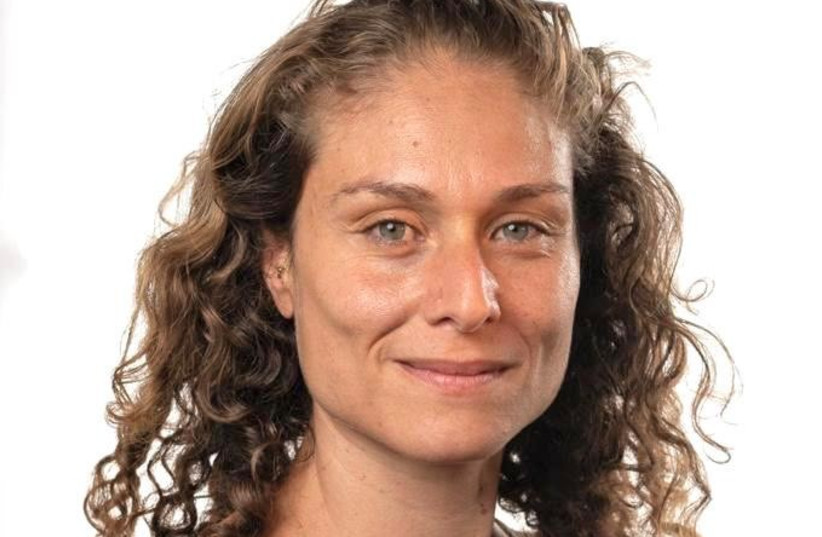When Shira Lahav was around 16 years old, she started to feel weak. She struggled to run in gym class and regularly lost her balance.
“My mom saw that things were not working right,” Lahav recalled. “So, she took me to a neurologist.”
Lahav was diagnosed with Charcot-Marie-Tooth (CMT), one of the most common rare or orphan diseases, which health professionals estimate impacts between one and 2,500 to 5,000 people. CMT is a hereditary neuropathic disease that progresses with age.
The disease is named after the French and British scientists who discovered it in 1886.
Now 46, Lahav had to structure her whole life around her illness, focusing on entering a field that would require no physical work, for example. She cannot stand on her feet for long periods of time or keep her balance. At 25, she was forced to purchase expensive, special shoes that allow her to walk without aid. Without them, her feet would fold beneath her.
“When I wanted to have a baby, I had to do all of these diagnostic exams,” Lahav said, though she admitted it is not something that can necessarily be predicted pre-birth. There is a 50% chance that either of her children could have CMT.
“When I had my children, I had to move near my mom for help because there are all kinds of things I could not do, like zipping jackets, closing small buttons and things like that,” Lahav said, adding that she could never take a walk without a stroller for fear she would fall with her baby.
Today, she said that her 7-year-old daughter gets frustrated because Lahav struggles to tie her hair into a ponytail.
“The worst thing is that there is just not enough knowledge about CMT even among doctors,” she said. “It is like living in the unknown.”
EVEN THOUGH CMT is the most common orphan disease, many physicians are unaware of it, and it is often misdiagnosed, according to information shared by the Israeli Association of CMT, which was founded only two years ago.
The syndrome causes muscle degeneration in the legs and arms. When victims experience its first symptoms, which are falls or difficulty walking, they might not realize they have the illness. It is only when it progresses to later stages that they seek a diagnosis.
“CMT is hereditary neuropathy,” explained Dr. Amir Dori, director of the Neuromuscular Clinic at Sheba Medical Center at Tel Hashomer. “Neuropathy is a disease or illness of the peripheral nerve.”
He said there are hundreds of types of CMT, though the most common one – CMT1A – affects 70% of patients.
There is no cure for the disease. Instead, patients use braces, insoles, special shoes, crutches, painkillers and moderate exercises such as swimming and personal fitness training to help live with it.
However, Dori said that there is a French company working on a drug that is nearing its final stage of research.
“Now, there is an attractive study that will test the effectiveness of this new drug, which is a combination of three drugs really, and hopefully that will work,” he said. “If it does, that will be super news for this community.”
The drug is specifically targeted for CMT1A. The study is also supposed to take place in Israel at Sheba and at least two other medical centers beginning next month, alongside concurrent trials in multiple centers outside of Israel.
“This will take about a year and a half to study, and the hope is that within two years we will know the answer,” Dori said.
INBAL BEN DAVID, a CMT patient, agrees. She said she is hoping that the drug will pan out and be included in the health basket by 2024 as “the first treatment on earth for patients with CMT.”
Ben David discovered she had CMT at the age of 12, when she broke her arm and the doctor discovered neurological issues as she tried to heal.
At such an age, Ben David tried to hide the disorder from her friends, she said, because she did not want to be different. But ultimately, she could not go on class trips with the rest of the kids in her class, participate in sports classes or run and jump and do the activities everyone else could do.
The experience led her to become a chemist and since graduating college she has worked in some of the top international pharmaceutical companies, all the time hoping to “find a cure for CMT patients.”
She also serves as the director of research and development for the Israeli Association of CMT, which is working to create a community to support CMT patients, share information and consult with one another, and assist in exercising rights for these individuals.
October is CMT Awareness Month, and the association is running a fundraiser on the J-Give platform to help support itself.
Ben David hopes that it works.
“In the next five to 10 years, I want CMT to be a disease that people have heard about and that treatments will be available for,” she said.

